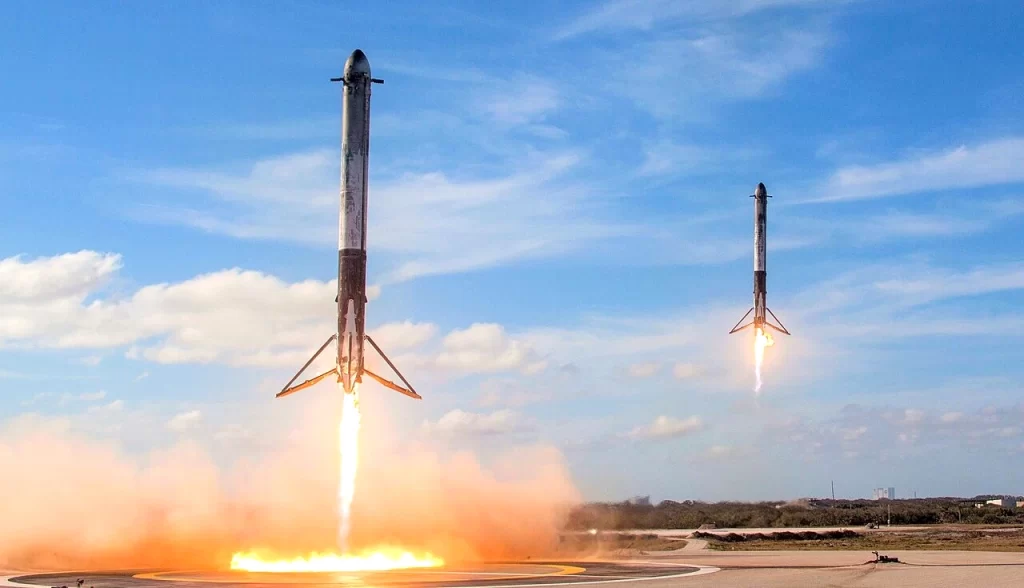Introduction
The space industry has long struggled with the high costs and inefficiencies of expendable rockets, where each mission required an entirely new launch vehicle. The development of reusable rockets has changed this paradigm, allowing companies to reuse key components and dramatically reduce launch costs.
One of the most significant advancements in reusable rocket technology comes from SpaceX, which pioneered the development of reusable launch vehicles capable of landing and flying multiple times. This has not only made space travel more economical but has also opened doors for satellite deployment, deep-space exploration, and space tourism.
The Evolution of Reusable Rockets
For decades, space travel was hindered by the enormous costs of rocket launches. Traditional launch systems relied on single-use rockets, where expensive boosters, fuel tanks, and engines were discarded after each mission. This made access to space financially unsustainable for commercial and research ventures.
The introduction of reusable rockets transformed this model, enabling a cycle of reuse that significantly lowers costs. SpaceX, along with other aerospace companies, has led this transition through extensive research and technological innovations.
Key Milestones in Reusable Rocket Development
| Year | Milestone | Significance |
|---|---|---|
| 1981 | First Space Shuttle launch | NASA’s Shuttle was partially reusable, but refurbishment costs were high. |
| 1993 | McDonnell Douglas Delta Clipper | Early prototype for vertical landing, but never commercialized. |
| 2015 | Falcon 9 first successful booster landing | First-ever controlled landing of a reusable orbital-class rocket. |
| 2017 | Falcon 9 first successful reflight | Demonstrated that a reusable rocket could be relaunched with minimal refurbishment. |
| 2020 | Falcon 9 reuses the same booster 10 times | Proved long-term sustainability of reusable rockets. |
| 2023 | Starship launch test | World’s largest reusable rocket developed for commercial and scientific missions. |
The rapid evolution of reusable rocket technology has dramatically reduced the cost of launching payloads into space, making frequent and cost-effective space travel possible.
Reusable Rockets: Advancing Spaceflight Technology
SpaceX has revolutionized spaceflight with its reusable rockets, making launches more sustainable and cost-effective. Over the years, the company has developed several key vehicles with varying capabilities, each playing a crucial role in the future of space exploration.
Falcon 9
Falcon 9 is SpaceX’s workhorse and the world’s first orbital-class reusable rocket. Featuring a reusable first stage, it has dramatically reduced launch costs and increased launch frequency. With a payload capacity of 22,800 kg to Low Earth Orbit (LEO), Falcon 9 supports commercial satellite launches, ISS resupply missions, and crewed flights through NASA’s Commercial Crew Program. The booster can be reused over 15 times, making it one of the most cost-efficient rockets in history.
Falcon Heavy
Falcon Heavy is currently the most powerful operational rocket, featuring three Falcon 9 boosters strapped together for a total thrust of 22,819 kN. With a payload capacity of 63,800 kg to LEO, it is designed for heavy cargo transport, interplanetary missions, and national security payloads. While its side boosters are fully reusable, the central core faces challenges due to extreme reentry conditions. However, its reusability reduces mission costs significantly compared to traditional heavy-lift rockets.
Starship
Starship represents SpaceX’s next-generation fully reusable rocket system, capable of carrying 150,000 kg to LEO and beyond. It is designed for missions to the Moon, Mars, and deep space. The system consists of the Super Heavy booster and the Starship upper stage, both of which are designed to be reused multiple times. Starship’s stainless-steel structure, Raptor engines, and refueling capabilities in orbit make it the most ambitious and powerful spacecraft ever built.
How Do Reusable Rockets Work?
Reusable rockets incorporate several key technological innovations that allow them to return to Earth safely and be launched multiple times.
The Process of Rocket Reusability
- Boostback burn – After separating from the second stage, the first-stage booster reorients itself and fires its engines to slow down.
- Controlled descent – The rocket uses grid fins for aerodynamic control and stabilization as it re-enters the atmosphere.
- Landing legs deployment – Just before landing, extendable legs deploy for a soft touchdown.
- Autonomous navigation – AI-driven systems enable precise landings on drone ships or landing pads.
- Post-landing refurbishment – After landing, the booster undergoes minimal refurbishment before being refueled and relaunched.
SpaceX’s Falcon 9 booster has been successfully reused over 15 times, proving that rocket reusability can drastically lower operational costs and increase launch frequency.
The Benefits of Reusable Rockets
The transition to reusable launch vehicles has significantly impacted the economics and sustainability of space exploration.
Cost Savings and Increased Efficiency
- Lower launch costs – Traditional rockets cost $60–$90 million per launch, while reusability cuts costs by up to 70%.
- Faster turnaround for missions – Rockets can be launched weeks apart instead of waiting months to build a new one.
- More affordable space access – New commercial ventures can now afford space missions.
Environmental and Sustainability Benefits
- Reduced space debris – Reusing rocket components prevents unnecessary waste in orbit.
- Less resource consumption – Instead of manufacturing new rockets, companies reuse existing boosters.
- Lower carbon footprint – SpaceX and other reusable rocket companies are working on reducing emissions per launch.
Expanding the Scope of Space Exploration
- Satellite deployment – Reusable rockets enable rapid deployment of global communication networks like Starlink.
- Deep space missions – More frequent and cost-effective launches support robotic explorations of asteroids, moons, and other planets.
- Space tourism – The lower cost of rocket flights makes space travel more accessible to private passengers.
Competitive Landscape: Other Reusable Rocket Companies
While SpaceX is the leader in reusable rocket technology, several aerospace companies are developing their own reusable launch vehicles to compete in the evolving market.
Major Competitors in Reusable Rocket Technology
| Company | Rocket | Notable Achievements |
|---|---|---|
| Blue Origin | New Shepard & New Glenn | Successfully developed suborbital reusable rockets; working on orbital-class vehicles. |
| Rocket Lab | Electron | Developed partial reusability for small satellite launches. |
| United Launch Alliance (ULA) | Vulcan Centaur | Plans to introduce a reusable booster for future missions. |
SpaceX’s rapid turnaround time and cost-effective rocket reuse currently give it a competitive edge, but increased competition is driving further innovation in reusable rocket technology.
Outcomes: The Impact of Reusable Rockets on Space Exploration
The rise of reusable rockets has fundamentally changed the dynamics of space travel, making it more accessible, cost-efficient, and environmentally sustainable.
Short-Term Outcomes (Next 5 Years)
- Lower cost for commercial space launches – More startups and research organizations will gain access to space.
- Expansion of space tourism – Private companies will launch more human spaceflights.
- Faster deployment of satellite constellations – Boosting connectivity and Earth-monitoring capabilities.
Long-Term Outcomes (Next 10–20 Years)
- Advancements in deep space exploration – Enabling robotic missions to the outer solar system.
- Growth in space-based manufacturing – Factories in space could utilize microgravity for producing specialized materials.
- Point-to-point rocket travel on Earth – Reusable rockets could revolutionize long-distance air travel by replacing commercial flights with hypersonic rocket-based transportation.
With rocket reusability becoming the norm, the future of space travel is poised for rapid advancement.
Conclusion
The transition from expendable rockets to reusable rockets has transformed space exploration, reducing costs, increasing efficiency, and making space missions more frequent and sustainable.
Companies like SpaceX, Blue Origin, and Rocket Lab continue to innovate in the field of reusable rocket technology, driving global advancements in satellite launches, space tourism, and deep-space missions.
Final Thoughts
With ongoing improvements in reusable rocket technology, the future of spaceflight is faster, cheaper, and more accessible than ever before.




